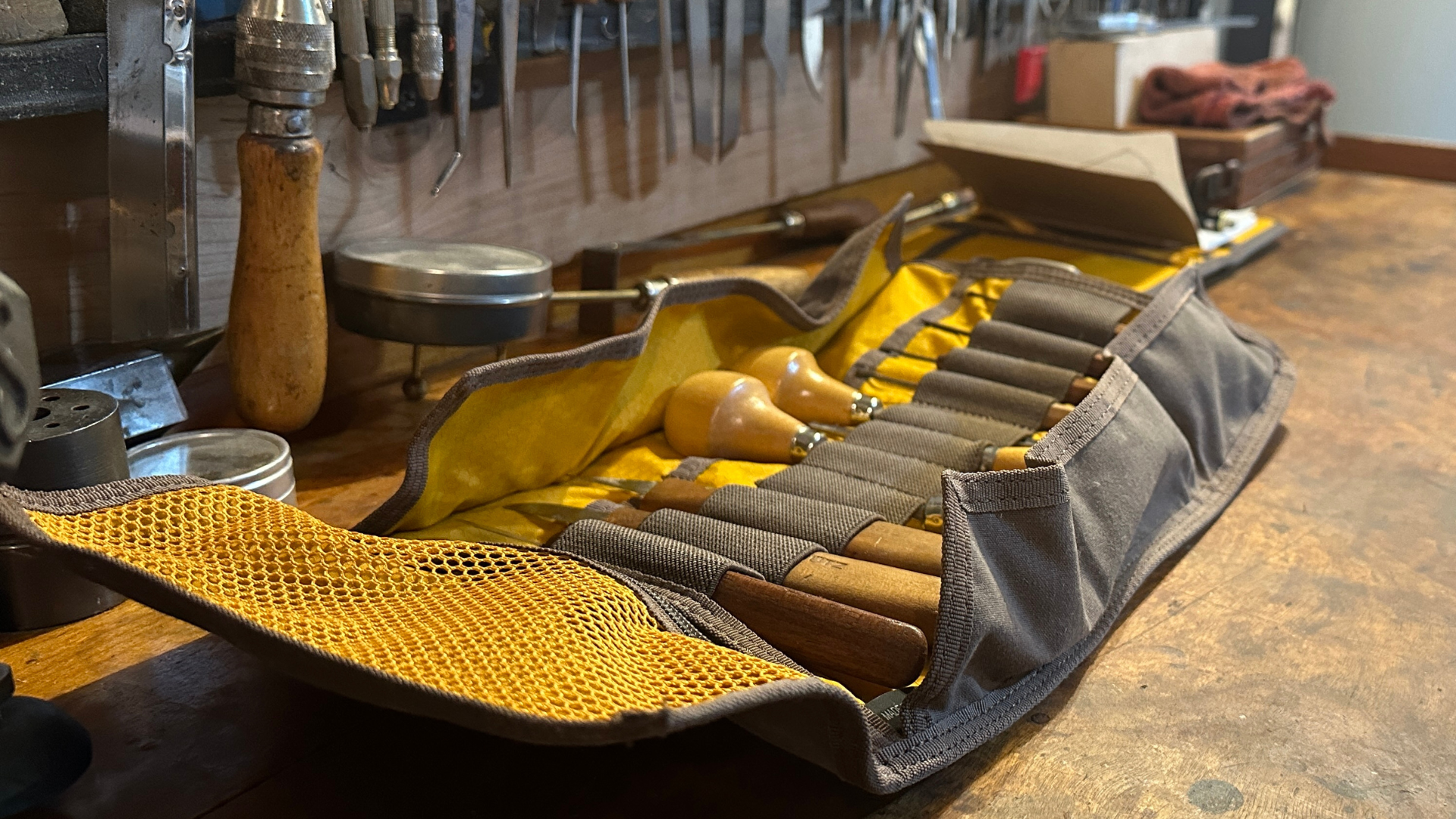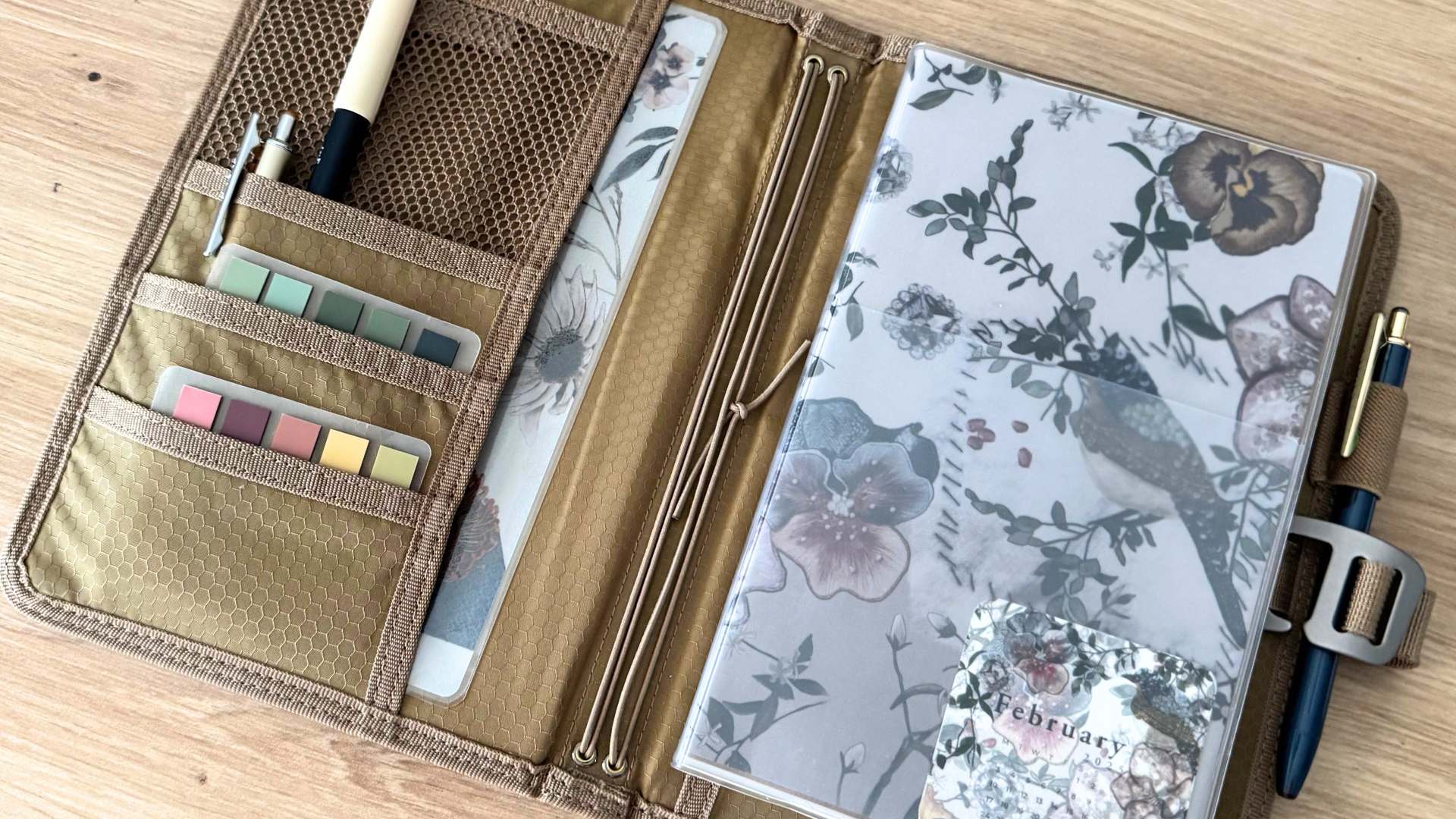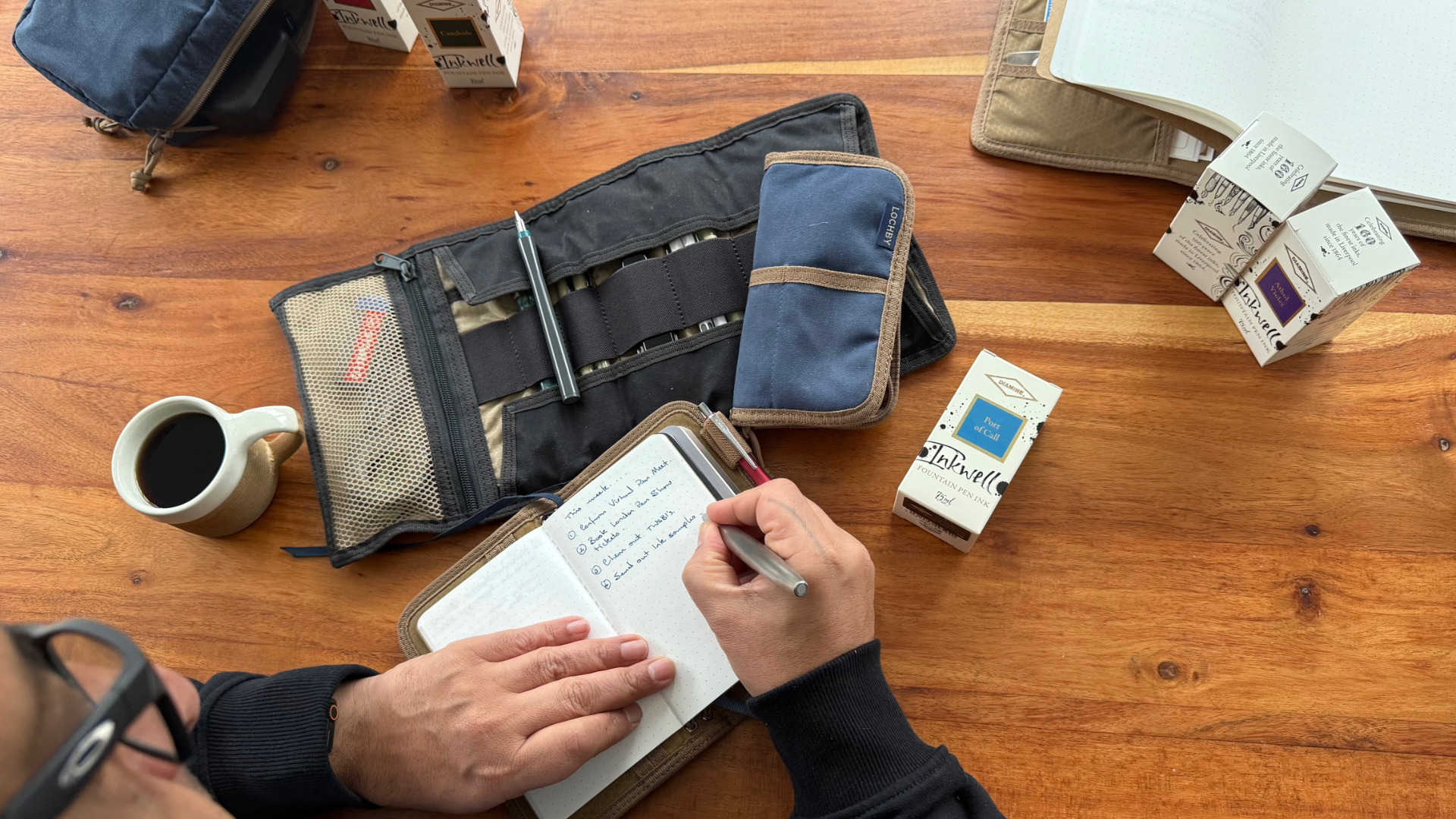Woodworking is more than just cutting and assembling pieces of wood—it's a craft that blends creativity, precision, and a deep appreciation for materials and mechanics. For Dug, it started as a simple curiosity and evolved into a lifelong pursuit of storytelling through movement and design.
From a small garage workspace to building intricate automata, his journey is a testament to following one's passion, experimenting fearlessly, and embracing the process of making.
Whether you're immersed in a lifelong passion of your own or still on the lookout for a worthwhile hobby, we hope Dug's story inspires and encourages you to keep going—and creating!
How did you get started and what did your first woodworking setup look like?
My first dedicated woodworking space was in the back corner of an unheated garage. My mother and stepfather bought me a Delta scroll saw and benchtop band saw and birthday and holiday gifts. A friend gave me a drill press and homemade stationary belt sander from his late grandfather’s workshop. I still have and use all of these tools.
I’m used to working in very small spaces. My favorite workshop was in a condo I owned for 10 years. The building was a former patent medicine company. My unit contained the original walk-in vault with walls that were a full two feet thick. I finished the interior and ended up with a compact, soundproof workshop right in my condo. It had a massive steel door with a combination lock on it. It made me feel like a character in a movie.
Was there a turning point that made you realize woodworking was something you wanted to pursue in life?
I’ve always dabbled, but I got serious about woodworking when I saw my first contemporary automaton by the talented British artist, Paul Spooner. He has a piece called “Fugu” which features a man nibbling on potentially poisonous piece of sushi. As you turn the crank on the side the little carved figure brings the food to his mouth repeatedly. After a few seconds, his head suddenly drops as if he has succumbed to the poison. I was enthralled by the artistry, the mechanism, the motion, and humor. I immediately decided that I wanted to make something like it and that’s what I did.
Over time, woodworking became more than just a hobby but a way of storytelling through movement and mechanics. Inspired by automata, Dug found a way to combine artistry with engineering, leading to a deeper appreciation of craftsmanship. The journey from a simple interest to a dedicated pursuit showcases how one discovery can shape a lifelong passion.

How has your journey related to woodworking evolved over time?
My first experience with woodworking was a summer job I had as a teenager making and raising post-and-beam structures.
The next phase of woodworking involved making some basic but solid bookshelves. Buying the tools and lumber to make shelves seemed like a better investment than simply buying the shelves. I also worked as a sign fabricator for a couple of years.
Eventually, I developed an interest in making small, mechanical sculptures from wood. (See this video for an example.)
In more recent years, I have become fascinated by ancestral skills. I’ve made an osage orange bow, burned-out bowls, throwing sticks, wood shrink pots, and a crossbow based on one found in France dating to 1040 AD.
Did you experience any challenging changes over the years (say, while pursuing woodworking for social media, etc)?
It can be distracting and difficult if you start making things based on what you think other people want -- particularly on social media. These projects aren’t as rewarding and over time can sap your creative energy. I had to learn that to stay engaged personally I needed to make sure that I was truly interested in what I was making.

What's a fun fact about you that your followers might not know?
I owned and operated an antique clock repair business for 5 years.
Can you share a memorable story or experience related to your woodworking journey?
When I got out of college I was desperately trying to find a job that involved using my hands. I applied at a sign fabrication company and landed an in person interview. When the hiring manager asked if I had any woodworking experience, I surprised him by pulling a three-piece wooden sign, complete with stand, out of my pocket and assembed it on his desk. The little carved wooden sign read “HIRE ME”. I got the job.
We'd have hired Dug with that surprise sign, too!
It's clear that his journey through woodworking has been shaped by curiosity, perseverance, and creativity. Building post-and-beam structures to designing automata and exploring ancestral skills, each step has deepened his craftsmanship.
His ability to blend function with storytelling has turned woodworking into a personal and professional adventure shows that it pays off to follow your instincts and experiment with different techniques as you let passion guide your craft.

What has your experience been with your Lochby gear?
Woodcarving is one of the few activities that I have found that allows me to enter a flow state easily. As such, it’s handy and liberating to be able to carry a set of my favorite tools when I travel, visit with friends, or take a little time to myself outdoors. With the Lochby Tool Roll, I can easily pack my two favorite carving knives, a set of mini carving tools, and a few of my favorite gouges. Add a small piece of basswood, and I am ready to carve anytime, anywhere.
How does Lochby help you with your day-to-day activities?
Sketching is integral to my creative process, regardless of what medium I am working with. I tend to research, take notes, sketch, prototype in low fidelity, sketch again, refine my prototype, and return to sketching before starting the final piece. The Mini Field Journal gives me a weatherproof place for my journal, mechanical pencils, ruler, and compass.
It’s always rewarding to see how our gear has the potential to become an essential part of an artist’s process no matter where inspiration strikes!

What are your future plans or goals related to woodworking and your channel?
I’ve just started a new YouTube series in which I focus on how to make, use, and appreciate interesting items from the past. This will include woodworking along with metalworking, flintknapping, and many other historic and prehistoric fabrication techniques. I plan to recreate items ranging from the 2.5 million year old stone tools to secret spy gadgets used during the Cold War.
Do you have any tips for anyone who’s just starting to get into woodworking or any other creative hobby or passion?
Pursue the project that fills you with the most excitement. Even if it isn’t the most practical thing in the world, your enthusiasm will help you to complete the project. In addition, your passion will have an infectious quality when you share it with other people.
What do you think beginners should avoid?
Avoid buying cheap tools unless they are the only option available to you. Your work and education will suffer. You will also find yourself replacing them sooner than you think. Don’t overlook vintage and antique tools. They were usually very well made and can be cleaned up and tuned to provide service superior to most modern tools.

Do you have a favorite quote that inspires you to keep going every day that can inspire others too?
One that comes to mind is from philosopher G.K. Chesterton. In his book, What’s Wrong with the World, he wrote: "If a thing is worth doing, it is worth doing badly." In his view, we too often outsource the most valuable things in life to specialists and professionals. His statement lends support to amateurs and generalists. You don’t have to be the best at something to find value in the act of doing it.
Dug's woodworking story is a perfect example of how creativity, curiosity, and hands-on experience can shape a meaningful craft. It's also a vital reminder that the most fulfilling projects are the ones driven by passion—where the joy of making is just as important as the final piece.
Make sure to follow Dug on Instagram and Youtube for inspiration and posts about his work!





Share:
Journal with Purpose: Helen's Creative Journey
Zip Through Creativity: The Design Journey of the Field Folio